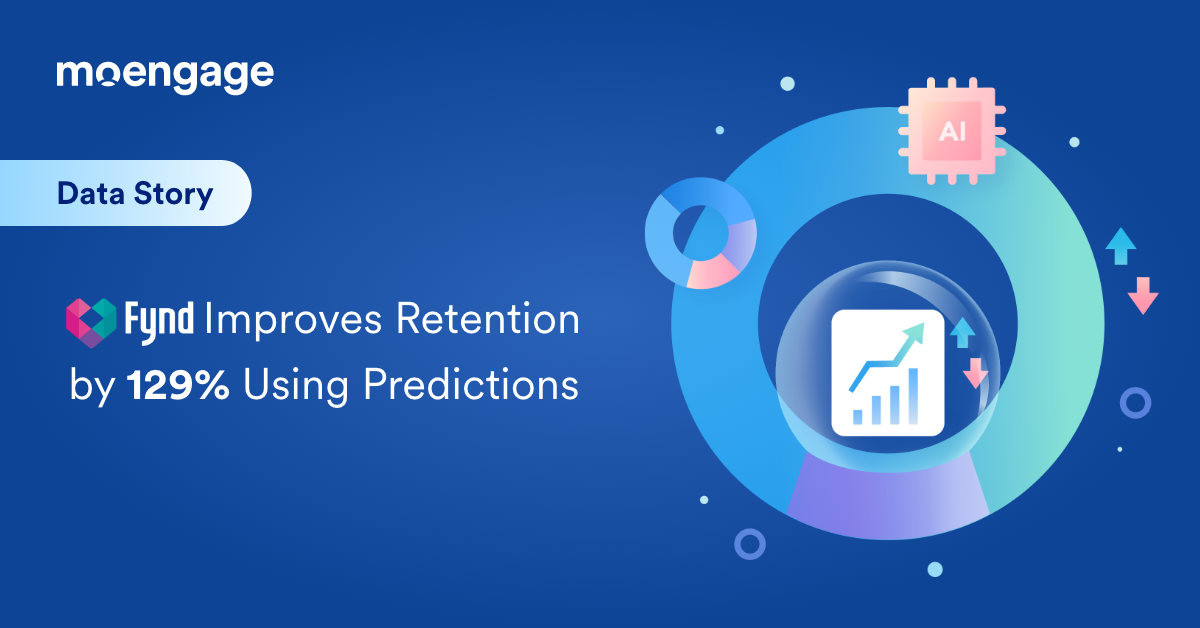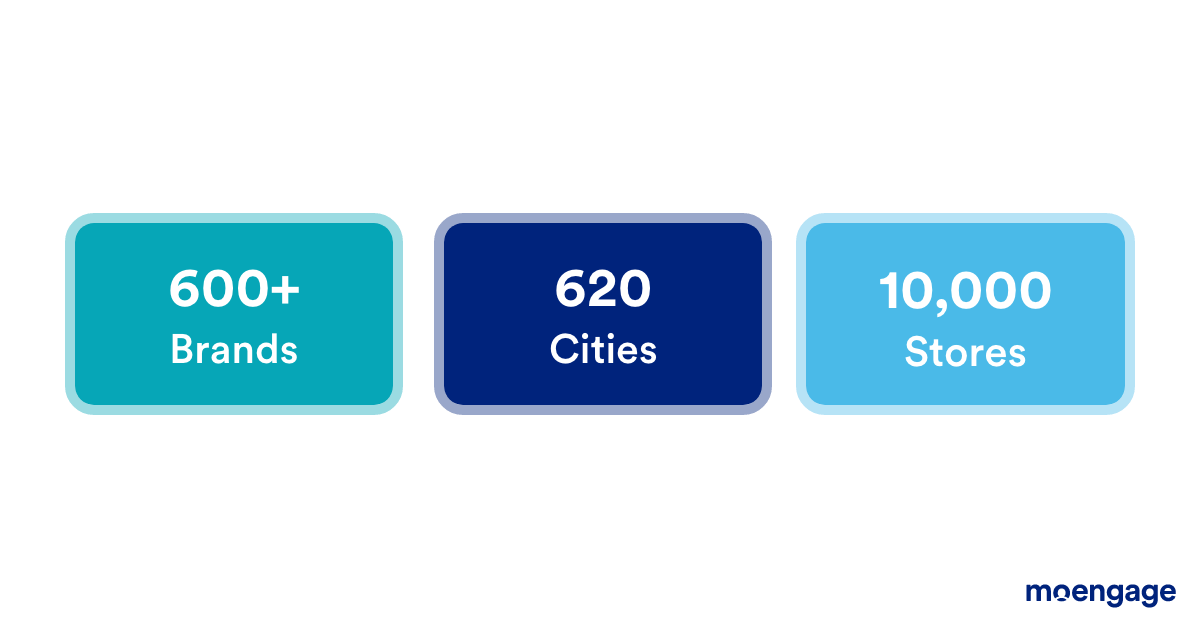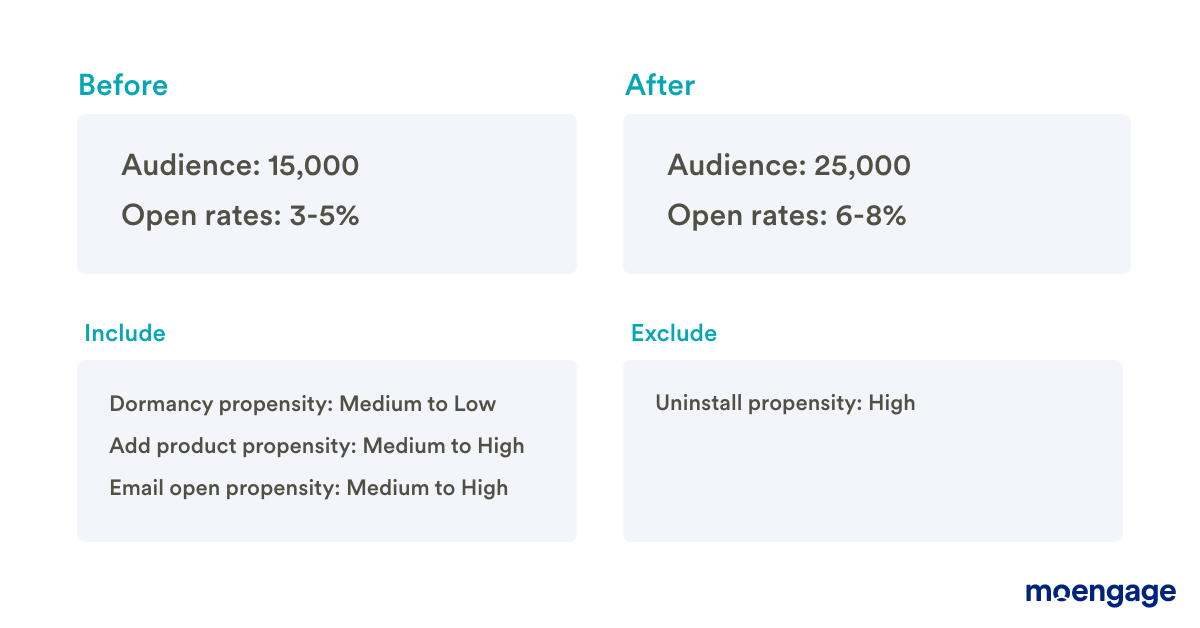Data Story: Fynd Finds 129% Increase in Retention Using Predictive Segmentation

Reading Time: 4 minutes
Nestled in the bustling city of Mumbai, India, lies the country’s largest omnichannel platform for retail businesses. Fynd enables retailers to run, view, and manage everything from a single dashboard through a centralized inventory, campaign, and order management solution. Today, this company is growing 20% month-on-month and has recorded a 129% increase in retention, from signups to app open in an 8-week period. Let’s find out how they achieved this with predictive segmentation.
👉Predictive marketing can increase your ROI by 500%! Learn how |
First: What does Fynd do?
The Fynd suite has two solutions: a store management portal for retailers, and a marketplace for consumers. The marketplace runs on both an app and a website. While the website sees 3X more traffic, the app generates over 80% of the revenue. Here’s a glance at the scale they operate at:

The audience consists of consumers within the 18-35 age group—deal hunters who shop only because of discounts. A subsection of this group, composed of 18-25 year-olds seek even higher discounts than the rest.
The growth team at Fynd is responsible for marketplace metrics such as DAU, MAU, retention percentage, churn rate, average order value, new customer count, etc. They run sale-, moment-, event-, or journey-based campaigns, capitalizing on rush timings to provide additional discounts. Here’s a glance at the top three rush timings with a surge in orders:
- The weekend, from Friday through Sunday
- Wednesdays
- 7-10 PM on other weekdays
| Related Read: How Empiricus Boosts Conversions By 45% Using User Path Analysis |
Sounds great, where’s the problem?
The growth team at Fynd realized that only 2% of their customers were coming back to the app after signing up, within an 8-week period. This number directly impacted their north star revenue metrics, so it was crucial to pull this up. To understand why this number was so low, the team looked at email metrics and got the insight that customers were receiving irrelevant emails. Open rates were as low as 3% from a customer base of 15,000. If this continued, it could risk irking the customers, leading to churn.
Fynd needed to identify customers who would respond positively to marketing communication and remove any customers that would react negatively. They had to optimize their marketing efforts and make every communication relevant to each customer without creating a dent in campaign cost.
If only there were a way to pre-emptively segment the audience into groups that would respond well and those that wouldn’t…
Enter MoEngage Predictions
MoEngage Predictions allows you to predict customer behavior (like conversion, churn, dormancy, etc.) with up to 96% accuracy and 99% precision.
| Models | Accuracy | Precision |
| Conversion | 95.9% | 99% |
| Churn | 80.1% | 98.3% |
| Dormancy | 89.2% | 91.6% |
Note: Accuracy is the ratio of correctly predicted observations to the total predicted positive observations. Precision is the ratio of correctly predicted positive observations to the total of predicted positive observations.
The team at Fynd leveraged MoEngage Predictions to identify that segment of the audience that would respond positively to their email messaging, and remove any customers who would react negatively. The Predictions algorithm created segments based on the following factors:
| Conversion | The likelihood of a user to make a purchase |
| Churn | The likelihood of a user to uninstall the app in the near future |
| Dormancy | The likelihood of a user to turn dormant |
| Add product | The likelihood of a user to add a product to their cart |
| Campaign effectiveness | The likelihood of a user to open emails |
Sending each customer the perfect email
The segments created by MoEngage Predictions enabled Fynd to find their optimal target audience—one that was most likely to purchase products and open emails, and least likely to go dormant or churn. With this in mind, they combined the following sub-segments for their next campaign:
- Propensity to Add Products: Medium to High
- Likelihood to Open Emails: Medium to High
- Propensity to go Dormant: Medium to Low
The following group was excluded:
- Propensity to Uninstall: High
The resulting group was most likely to add products or make a purchase, most likely to open emails, and least likely to go dormant. Anyone who had a high propensity to uninstall was excluded. As a result, the email base increased from 15,000 to 25,000 customers—but this time, the target audience was more relevant, and therefore more likely to respond positively. The open rates for this campaign doubled to 6-8% even as audience size increased by 66%.

It’s all about insights
For as long as we can remember, marketers have been following a ‘plan > run > analyze > course-correct’ process, but the market today is flooded with competitors and customers have plenty to choose from. The only way to stand out is by creating delightful experiences at every opportunity. This means that marketers need to flip the process and be insights-led instead.
Insights-led engagement enables you to gather insights about your customers and leverage this information to deliver the most relevant marketing campaigns to each of them. Insights-led engagement is the key to retention and growth. That proved to be true for Fynd—by identifying their ideal customer using predictive segmentation, Fynd was able to optimize every email sent, and ensure that each one delivered the best possible ROI. Retention from signups to app open within an 8-week period increased 129%, from 2.29% to 5.24%.













